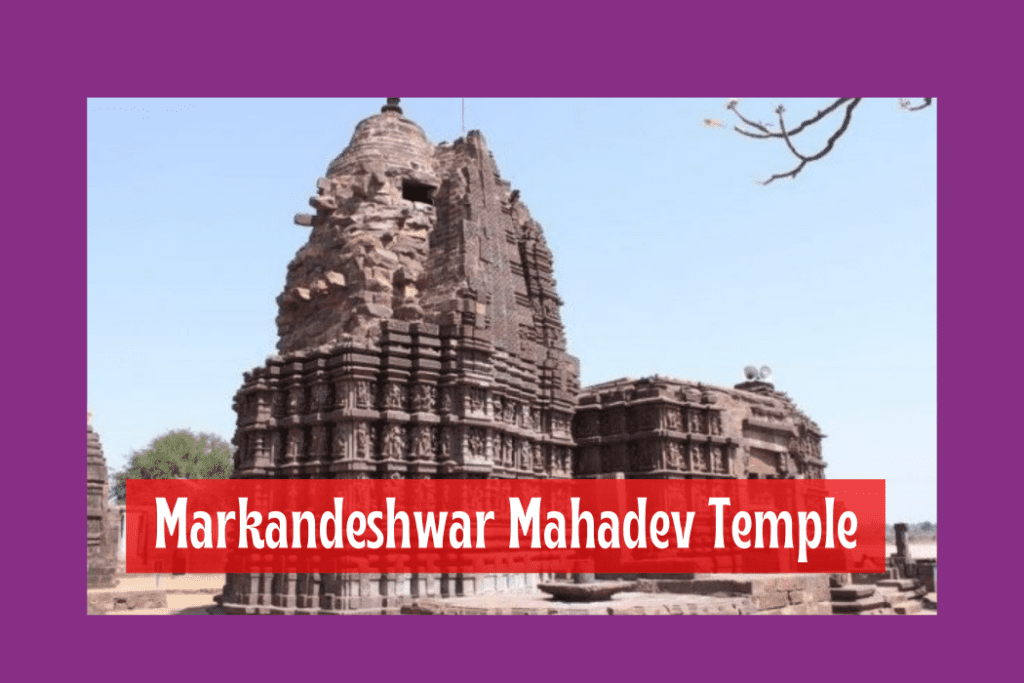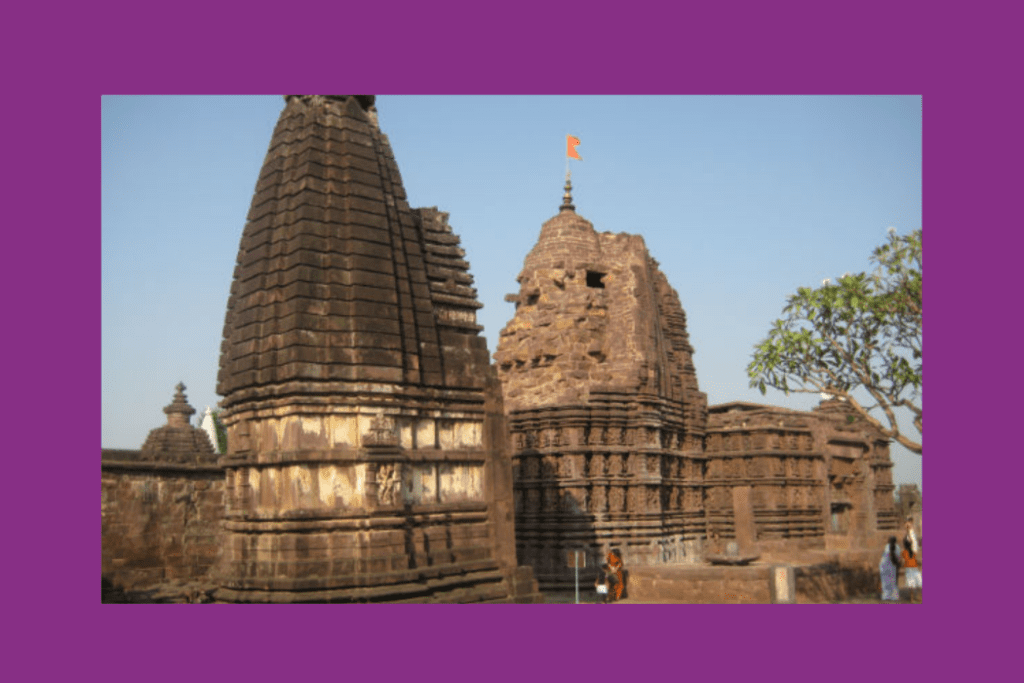Markandeshwar Mahadev Temple, Ujjain: History, Significance, and Travel
This blog discusses the historical background, architecture, wonderful attractions, and tranquillity of Markandeshwar Mahadev temple, making it an excellent destination to explore.

Located in Madhya Pradesh, Ujjain is well-known for its abundant history and importance in religion. The city is home to many valuable treasures such as the Markandeshwar Mahadev temple, which pays homage to one of Lord Shiva’s 84 manifestations.
Followers trust that honouring Markandeshwar Mahadev results in receiving children who are both healthy and intelligent.
The Markandeshwar Mahadev temple is situated behind the Ram Janardan temple complex. Devotees hold it in high regard and it is the 36th temple visited during the traditional parikrama of Shiva temples in Ujjain, being cherished by many. Hence, the Markandeshwar Mahadev temple in Ujjain functions as both a religious site and has strong ties to Hindu mythology, impacting multiple areas of India.
This blog discusses the historical background, architecture, wonderful attractions, and tranquillity of Markandeshwar Mahadev temple, making it an excellent destination to explore.
Read this Blog to know about Alopi Devi Temple – Alopi Devi Mandir, Prayagraj: History, Significance, and Travel
History and Story behind the Markandeshwar Mahadev Temple
Situated in the lively spiritual ambiance of Ujjain, the Markandeshwar Mahadev Temple houses a fascinating tale. This temple devoted to Lord Shiva is not just a place for worship; it symbolises the unwavering faith and divine blessings received by devotees seeking grace.
The tale starts with Mukand, a fervent follower of Lord Shiva. He longed for the happiness and duty of being a parent, but he had no children. Unfazed, Mukand started a journey of focused spiritual practice, engaging in strict austerities in the secluded Himalayas. Lord Shiva was impressed by his steadfast faith and dedication, and eventually manifested before him, recognizing his commitment.

Lord Shiva, impressed by Mukand’s unwavering devotion, offered him a path to fulfil his heartfelt desire. He instructed him to travel to Ujjain and locate a specific Shivling situated north of Pattaneshwar in the Mahakaal Van. Mukand, his heart brimming with hope, followed the divine guidance and reached Ujjain. He dedicated himself to fervent prayers and austerities at the designated Shivling. His unwavering faith touched the divine realm once more.
Lord Shiva, along with his companion Parvati, came out of the Shivling as a result of Mukand’s steadfast dedication. They granted Mukand’s deepest wish by blessing him with healthy and intelligent children.
Following this extraordinary event, Sage Markandeya arrived at the location. He too offered his prayers and devotion to the Shivling, recognizing its potent spiritual energy. Recognizing the Sage’s piety, Lord Shiva declared that the Shivling would henceforth be known as Markandeshwar Mahadev, after the revered sage. Moreover, He bestowed a powerful blessing: all who offered sincere prayers at this temple would be blessed with a healthy and fulfilling life.
Architecture of Markandeshwar Mahadev Temple
Given the temple’s historical association with the 84 Shiva temples of Ujjain, it’s likely to follow a traditional and relatively simple architectural style. This style typically features shrines built in stone or brick, with minimal ornamentation compared to grander temples.
Situated behind the Ram Janardan temple complex, the Markandeshwar Mahadev Temple likely occupies a relatively limited space. This suggests a compact structure compared to sprawling temple complexes.
Spiritual Significance and Festivals
As Ujjain is famous for its many Shiva temples, it is probable that festivals held at the Markandeshwar Mahadev Temple also carry importance due to this reputation. Some of the festivals could consist of:
Maha Shivaratri, a major festival dedicated to Lord Shiva, is celebrated in India with special customs, offerings, and extended night prayers.
Shravan Month is a sacred period dedicated to Lord Shiva, marked by frequent prayers and rituals at Shiva temples like the Markandeshwar Mahadev Temple.
Every month on the 14th day of the lunar cycle, Shivratri is celebrated with special pujas and offerings for Lord Shiva.
Akshaya Tritiya is the day of propitious beginnings, possibly linked to blessings for children’s welfare at the Markandeshwar Mahadev Temple.
Basant Panchami: Signalling the start of spring, possibly associated with blessings for children’s progress and advancement.
Tourist attractions around the Markandeshwar Mahadev Temple
Ujjain, an ancient city abundant with the sacred essence of its history, draws both pilgrims and tourists. While the Mahakaleshwar Jyotirlinga is a significant Shiva temple in India, the city provides many other spiritual opportunities alongside this well-known site. Here are some intriguing locations that add to the diverse landscape of Ujjain.
The singer’s incredible performance led everyone in the audience to stand up and give a standing ovation.
Mahakaleshwar Jyotirlinga
Just 4 kilometres away from Rankeshwar Dham, the Mahakal temple exudes a unique spiritual energy. Devoted to Lord Shiva, the main god is housed in a lingam that naturally forms and emits a unique energy. The temple complex contains a blend of architectural designs and is filled with the sounds of chanting and ringing bells. Experience the one-of-a-kind Bhasma Aarti ritual, a mesmerising ceremony in which ashes from the cremation site are presented to the god.
Temple of Mangal Nath
The tranquil Mangal Nath Temple is located on the sacred shores of the Shipra River. The temple, known for fulfilling wishes regarding love, marriage, and relationship enhancement, is devoted to Lord Mangal Nath, who embodies Shiva. Followers, especially young couples, look for blessings and conduct pujas (ritual worship) to have a harmonious life together. The calm environment and the soft whisper of the river provide a peaceful setting for reflection and meditation.
Gadh Kalika Temple
Perched on a hill, the Gadh Kalika Temple provides a stunning panoramic view of Ujjain. The temple, constructed in the 6th century, is thought to have been worshipped by the powerful Goddess Kali. Ascending to the temple is a holy journey that connects you with the divine. Upon arriving at the peak, the vast panorama of the city beneath appears like a gift from the heavens.
Sandipani Ashram
The Sandipani Ashram, famous for its historical and religious importance, is believed to be where Sage Sandipani taught Lord Krishna. Strolling around the peaceful ashram grounds, one can sense the reverberation of age-old teachings spanning across time.
Chintaman Ganesh Temple
Visiting the Chintaman Ganesh Temple is essential for individuals striving to conquer obstacles and attain success. Lord Ganesha, the primary deity with an elephant head who is famous for clearing obstacles, is the main god in this area. The temple is famous for its peaceful atmosphere and detailed sculptures.
Frequently Asked Questions
What is the significance of Markandeshwar Mahadev Temple?
As Ujjain is famous for its many Shiva temples, it is probable that festivals held at the Markandeshwar Mahadev Temple also carry importance due to this reputation. Ujjain, an ancient city abundant with the sacred essence of its history, draws both pilgrims and tourists. While the Mahakaleshwar Jyotirlinga is a significant Shiva temple in India, the city provides many other spiritual opportunities alongside this well-known site.
What is the story of Markandeshwar Mahadev Temple?
Lord Shiva, impressed by Mukand’s unwavering devotion, offered him a path to fulfil his heartfelt desire. He instructed him to travel to Ujjain and locate a specific Shivling situated north of Pattaneshwar in the Mahakaal Van. Mukand, his heart brimming with hope, followed the divine guidance and reached Ujjain. He dedicated himself to fervent prayers and austerities at the designated Shivling. His unwavering faith touched the divine realm once more.
How is the Architecture of Shani Shingnapur Temple?
Given the temple’s historical association with the 84 Shiva temples of Ujjain, it’s likely to follow a traditional and relatively simple architectural style. This style typically features shrines built in stone or brick, with minimal ornamentation compared to grander temples. Situated behind the Ram Janardan temple complex, the Markandeshwar Mahadev Temple likely occupies a relatively limited space. This suggests a compact structure compared to sprawling temple complexes.

Want to know about Bhimashankar Jyotirlinga? Read this blog – Bhimashankar Jyotirlinga, Pune: History, Significance, and Travel




